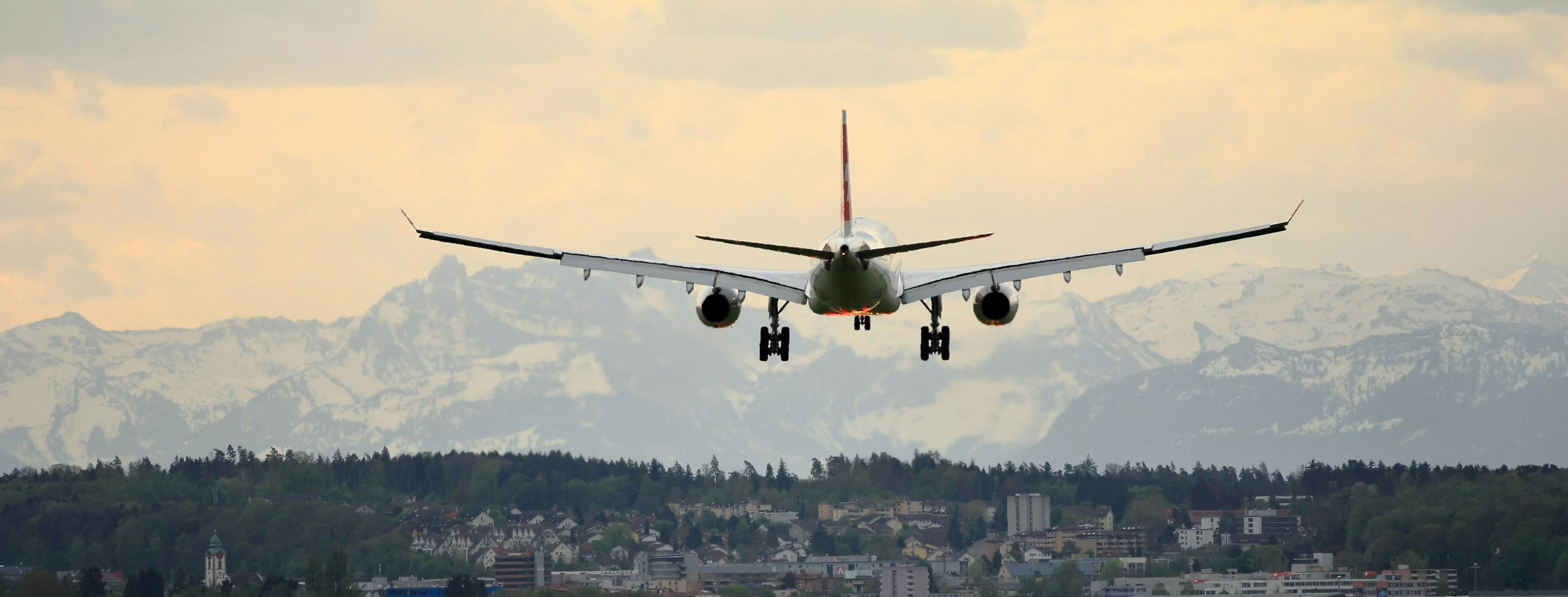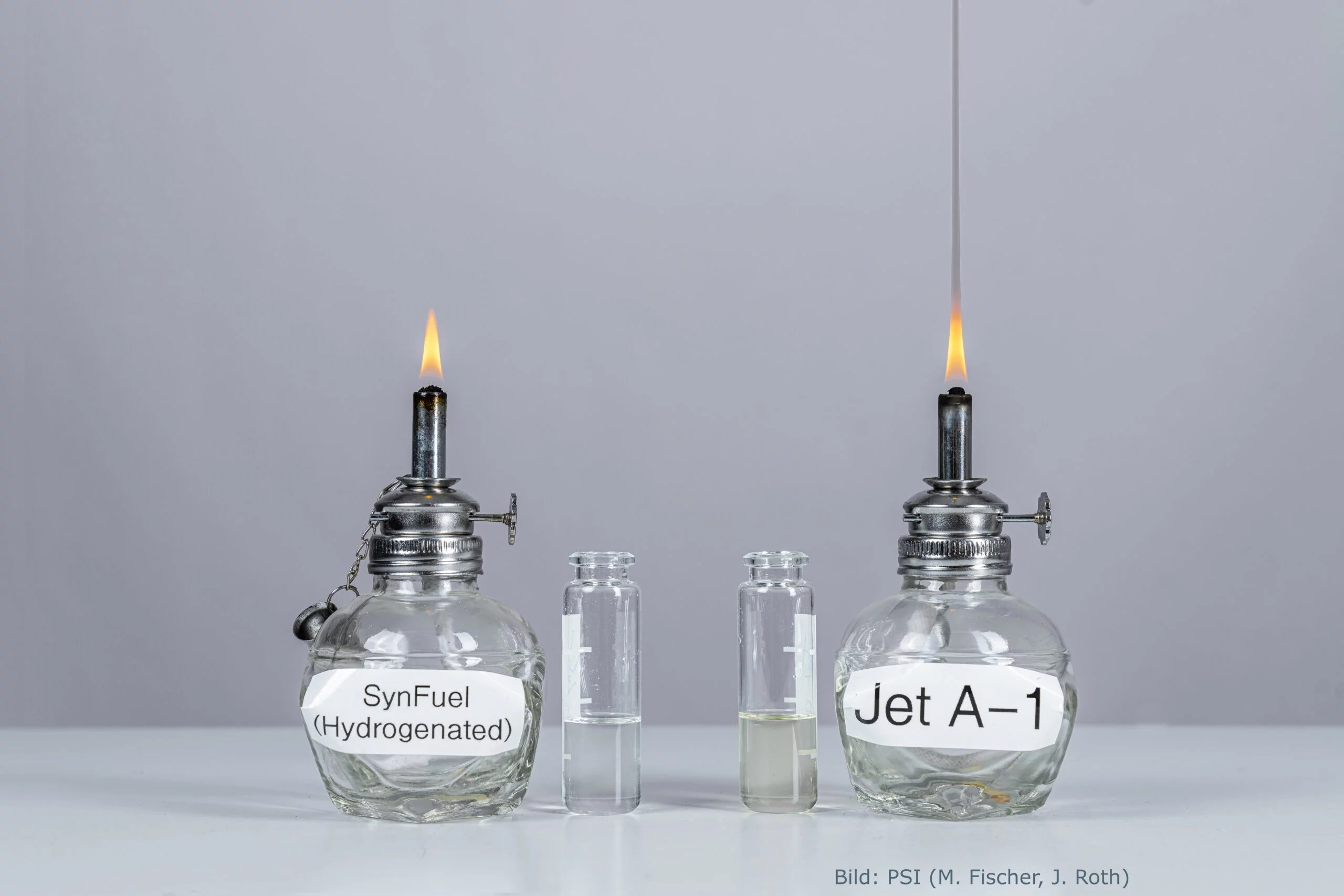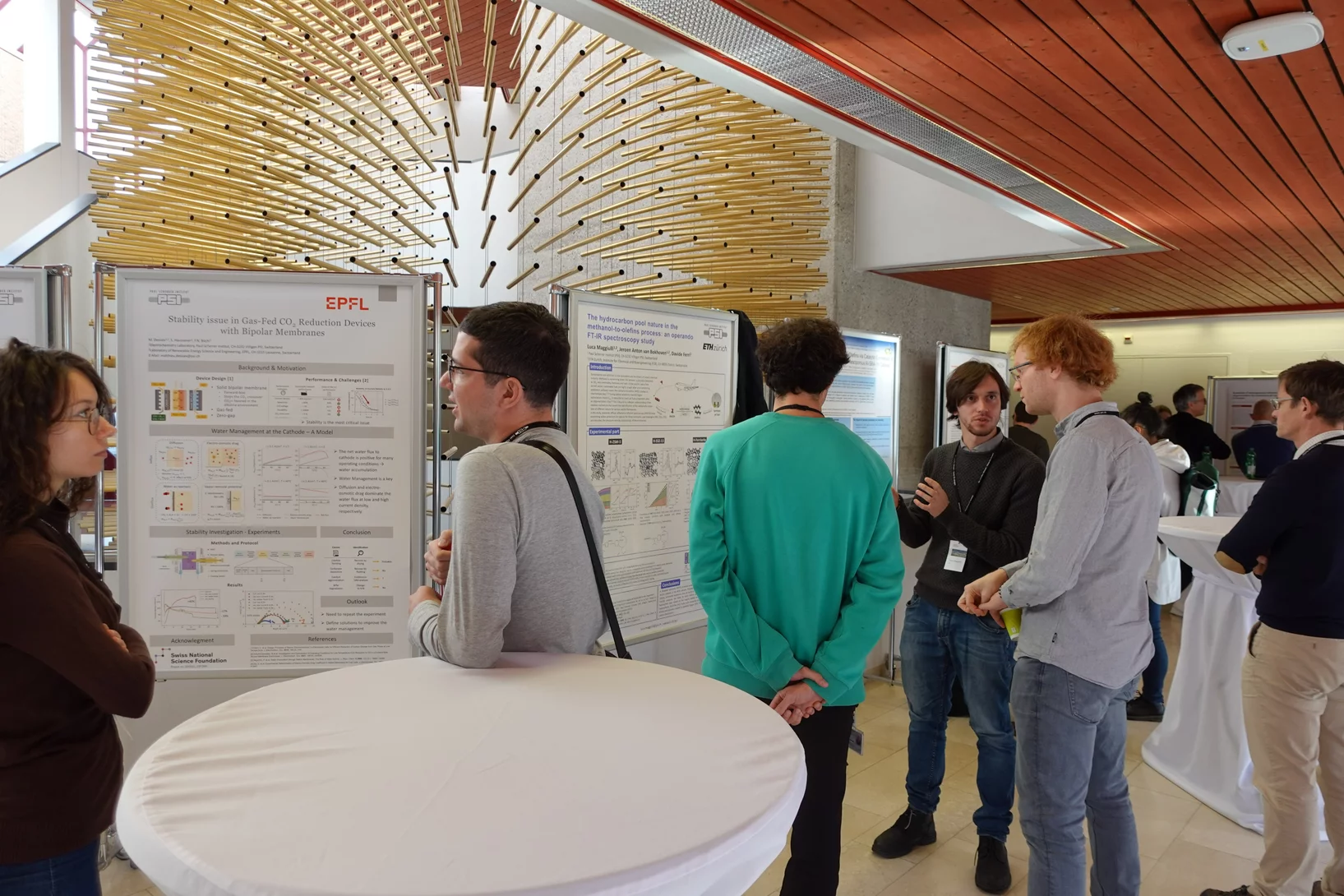
SynFuel is a joint initiative between the two research institutes PSI and Empa. The aim of the initiative is to develop a process that will allow the production of Jet fuel from renewable sources. In order to do so, hydrogen and carbon dioxide are derived from sustainable sources to make liquid fuel mixtures of high quality, which shall allow for residue-free combustion and are thereby suitable for aircraft propulsion. A future where fossil fuels can be replaced in mobility, especially in air transport, which has proven to be very difficult to do, is what the SynFuel project strives for.
Duration: 3 years
Funding: 6.2 million CHF
Funded by: Board of the Swiss Federal Institute of Technology (ETH)
A Joint project by:
Further literature
Papers published:
Synthetic Fuels
Synthetic vs. fossil kerosene
While switching to renewable electricity and heat is feasible in many areas, it is challenging to replace combustion-based propulsion in applications such as aviation. Synthetic kerosene is a possible solution. There are various processes for its production, but all require carbon dioxide (also from biomass) and hydrogen generated with renewable energy. An additional benefit is the reduction of aerosols and other pollutant emissions.
Using fossil kerosene as the primary aviation fuel is not an option in a global economy complying with net-zero CO2 emission goals. A switch to sustainable alternatives is required. Be it electric propulsion for short distances, hydrogen-powered aircraft, or synthetic liquid hydrocarbons. These synthetic hydrocarbons exhibit similar energy densities as fossil kerosene and are thus the most promising alternative for intercontinental flights. Biomass or low-carbon electricity and CO2 from various sources can serve as feedstock for the production of sustainable aviation fuel. Using CO2 from biomass or captured from the atmosphere allows for potential carbon neutrality.
Research groups at PSI and Empa teamed up in the SynFuels initiative to develop process technologies for different synthetic fuel production pathways, including electrochemical CO2 reduction, thermochemical biomass conversion, and others. Furthermore, the consortium evaluates the production pathways regarding their economic and environmental performance by applying life cycle assessment. Thus, the evaluation will address the impacts of aviation on climate change and potential co-benefits and trade-offs regarding effects on human health, ecosystem quality and the use of water, land and other resources. One result of the assessment was that the non-CO2 related climate effects associated with aviation will require additional compensation measures like carbon capture and storage to reach a climate-neutral aviation sector by 2050. On the experimental side, the groups made significant progress on the next-generation catalyst and process development towards sustainable aviation fuel.






